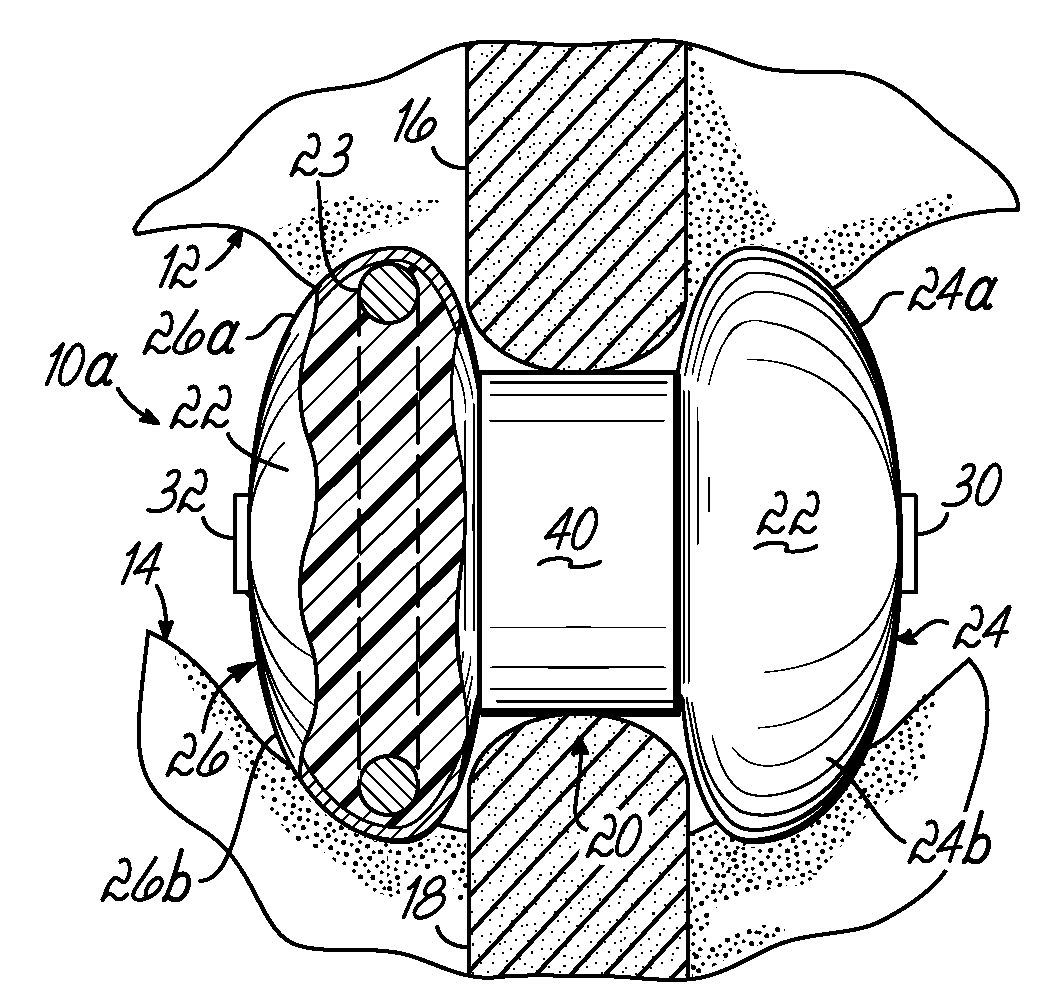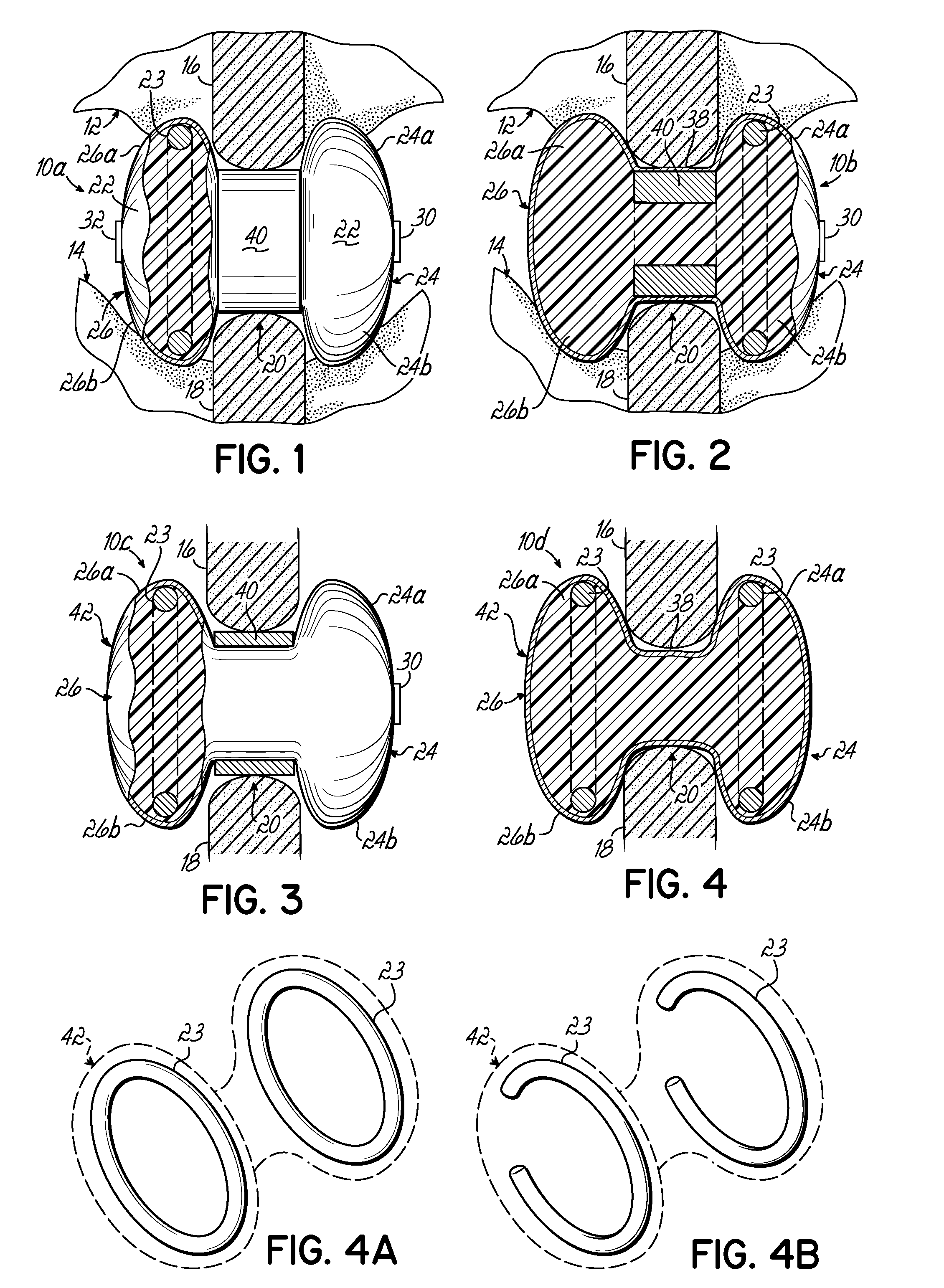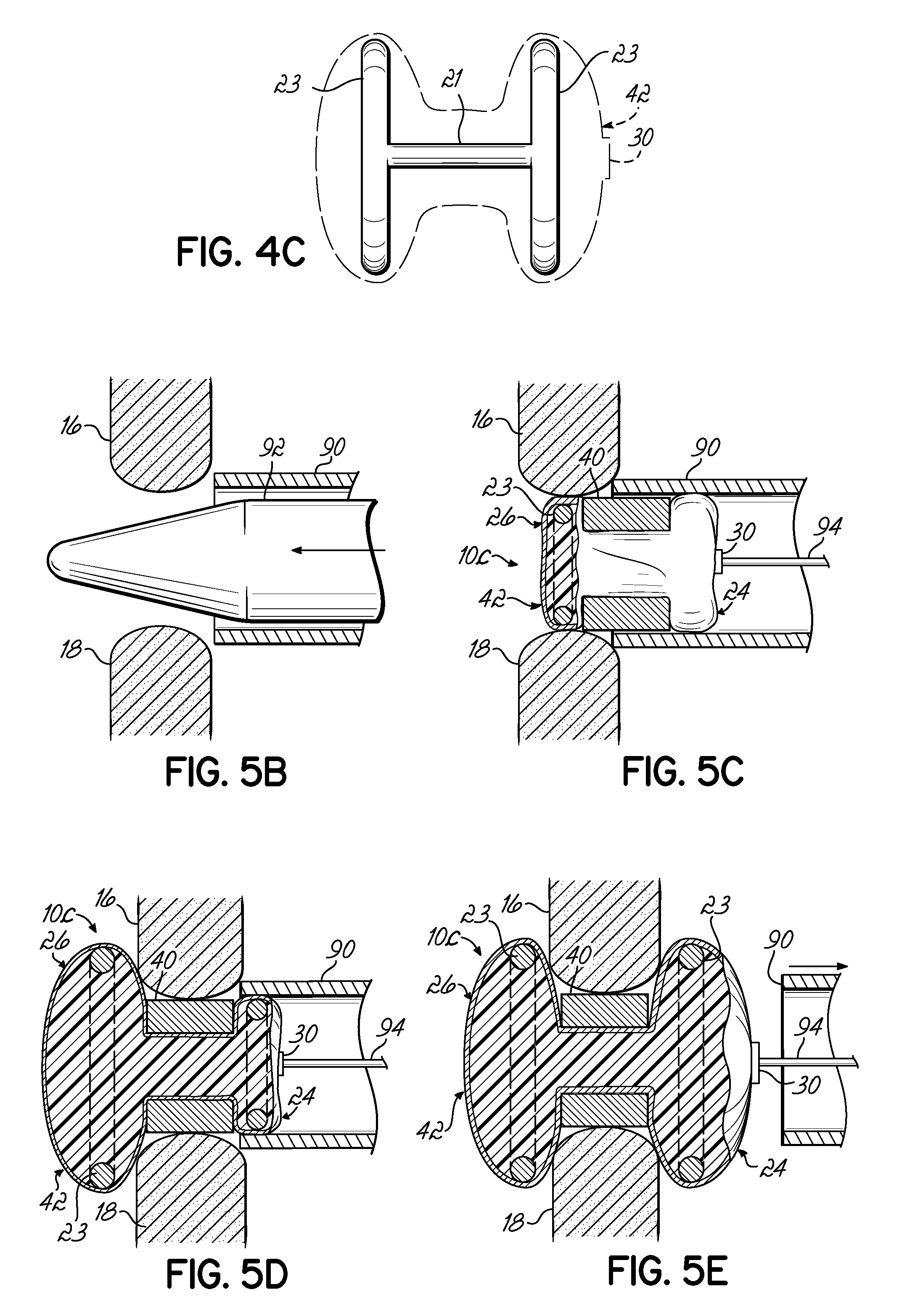Expandable interspinous process spacer with lateral support and method for implantation
a technology of interspinous process and spacer, which is applied in the field of devices for treating spinal stenosis, can solve the problems of facet joint breakage, back and leg pain, and the deterioration of the cushioning disc between the vertebrae, so as to relieve the pressure on the posterior wall, relieve pain, and relieve the effect of pain
- Summary
- Abstract
- Description
- Claims
- Application Information
AI Technical Summary
Benefits of technology
Problems solved by technology
Method used
Image
Examples
Embodiment Construction
[0035]With reference to the Figures, wherein like numbers denote like parts throughout the several views, exemplary interspinous process spacers 10a-d are shown in accordance with the invention for maintaining a desired spacing between the spinous processes of adjacent vertebrae 12 and 14. According to embodiments of the invention, FIGS. 1-4 illustrate interspinous process spacers 10a-10d that possesses a geometry generally in the form of an H-shape or dumbbell (used interchangeably herein). The spacers 10a-10d comprise a medial portion 20 adapted to reside between adjacent superior spinous process 16 and the inferior spinous process 18. The medial portion 20 may comprise an expandable medial member 38 (FIGS. 2-4) and / or a rigid medial member 40 (FIGS. 1-3).
[0036]Spacers 10a-10d further comprise opposing lateral portions 24 and 26, which are located at the lateral ends of the medial portion 20. Each lateral portion 24, 26 consists of a superior lateral portion 24a, 26a adapted to re...
PUM
 Login to View More
Login to View More Abstract
Description
Claims
Application Information
 Login to View More
Login to View More - R&D
- Intellectual Property
- Life Sciences
- Materials
- Tech Scout
- Unparalleled Data Quality
- Higher Quality Content
- 60% Fewer Hallucinations
Browse by: Latest US Patents, China's latest patents, Technical Efficacy Thesaurus, Application Domain, Technology Topic, Popular Technical Reports.
© 2025 PatSnap. All rights reserved.Legal|Privacy policy|Modern Slavery Act Transparency Statement|Sitemap|About US| Contact US: help@patsnap.com



